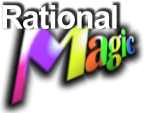

| 1941: The Illustrated Story. By Stephen Bissette and Rick Veitch. Adapted by Allan Asherman. New York: HM [Heavy Metal] Communications/Pocket Books, 1979. 1v. (unpaged). n.p. ISBN 930-83408-9 [sic]. |
|
GENRES: AUDIENCE: NOTE: This book is an adaptation of the Steven Spielberg floppola movie 1941. SYNOPSIS: Later, Wally and Denny get a zoot suit by secretly pumping an air raid siren in a clothing store. Betty returns to her parents' home (which is on a cliff by the sea) to find Wally hiding in the garage, asking about the dance. Betty tells him to go away and forget about it because she "can only dance with real men now… not lovable hoodlums in zoot suits!" The army arrives and leaves an antiaircraft gun at the house because it's "first line of defense against possible invasion." Sitarski is the one who brought it, and he immediately is attracted to Betty. Wally is offended and falls out of the garage, along with bags of manure. Betty is mortified, and Sitarski kicks Wally into a garbage truck. Japanese ninjas capture Hollis Wood, a Christmas tree vendor, and try to get him to point them toward Hollywood. The crusty old dude refuses to reveal anything, and he even swallows a glow-in-the-dark compass to keep it from the enemy. Elsewhere, Donna, General Stilwell's new secretary, is having a passionate affair with a soldier named Birkhead. They investigate a plane as a place to have sex and accidentally drop a bomb onto the general's car. Back with the Japanese, they're feeding Hollis prune juice to get him to "release" the compass. He manages to escape, however, and swim to shore. Back at the Crystal Ballroom, General Stilwell gets a message from Colonel "Madman" Maddox, who insists that a Japanese airfield is hidden in Pomona alfalfa fields. Birkhead and Donna volunteer to drive up there to keep a stockpile of bombs away from Maddox. The zoot-suited Wally attempts to get into the Ballroom but is shoved away by an MP-right into Sitarski. Sitarski kicks Wally in the nuts and departs. Dancing with Betty, the soldier begins to display a more bestial side. Seeing this, Wally knocks out the MP, steals his uniform, and enters the Ballroom to dance with Betty. A riot breaks out. More and more people pour into the Ballroom to join the fight. In Pomona, Birkhead and Donna take off in a plane, ostensibly to do recon for Maddox but really to have sex. They forget to file a flight plan, so when they fly over an army base, the army starts shooting. ELSEWHERE (God, I'm getting tired of this), two civilian spotters, the nauseated Herb and Claude and his ventriloquist's dummy, sit atop a Ferris wheel, keeping an eye out for the enemy. Back at the riot, Wally sees Betty leave the Ballroom pursued by the hungry Sitarski. The rioters have their hatred turned to hatred of the Japanese, and the riot cools down. As the Donna/Birkhead plane soars over LA with the horny pair making love, antiaircraft guns rip the night; Wild Bill also shoots at them. Man, this book isn't worth this lengthy a synopsis. Suffice it to say that the anti-aircraft gun at Betty's parents' house gets to be used, the Ferris wheel gets blown up, Wally gets patriotic (and beats up Sitarski and gets Betty), and Wild Bill ends the book by falling into the retreating submarine. The book begins with a long "funny" introduction by Spielberg that's so densely lettered that it's all but impossible to read. EVALUATION: The art lends a special air of badness to this book. It's a collage of original drawings and pasted-in images of people and things from that era. Some of the pages are so dense with images that you stop reading to try to identify everything--kind of like a website whose designer has loaded it with Flash animation and sound and movies to hide the fact that there isn't any content beneath the glitter. The denseness of the art did a lot to render the story even more incomprehensible. The art also reminded me of (much better) pages from MAD magazine, where artists (especially Angelo Torres and Mort Drucker) drew little "funnies" in the corners or the backgrounds of the panels. The far superior artists of MAD knew not to let these "funnies" dominate the storytelling part of the artwork; Bissette and Veitch turned whole panels into collages of "funnies." Like the racism, the book's nude scene seems utterly gratuitous. The whole project has a smirking air of "look at us, we're drawing cool." I haven't seen the movie, and I certainly haven't been tempted to by this POS. If the movie was half this bad I can see why it bombed; if this book followed the script fairly faithfully, it's a wonder Spielberg was ever asked to make a movie again. I suppose fans of the movie might be interested. Everyone else can surely pass. |
Return to Rational Magic Home
